---------------------------------------------------------
Fresh veggies play an important part in keeping us all healthy. Essential vitamins & minerals protect our cells from disease and give our bodies the fuel they need. The same is true for your pets & livestock!
The costs for fresh, organic food for your animals can sometimes be prohibitive if you have a large furry or feathered family. The great news is many of the foods your animals will benefit from the most are super easy to grow. When you are planning your garden this year, consider adding some plants for your pets or even tending a bed exclusively for your animals. Not only will it cut down significantly on your monthly feed bills, but your animals will also get to share in the benefits of a healthy harvest. So what would your animals like in your garden?
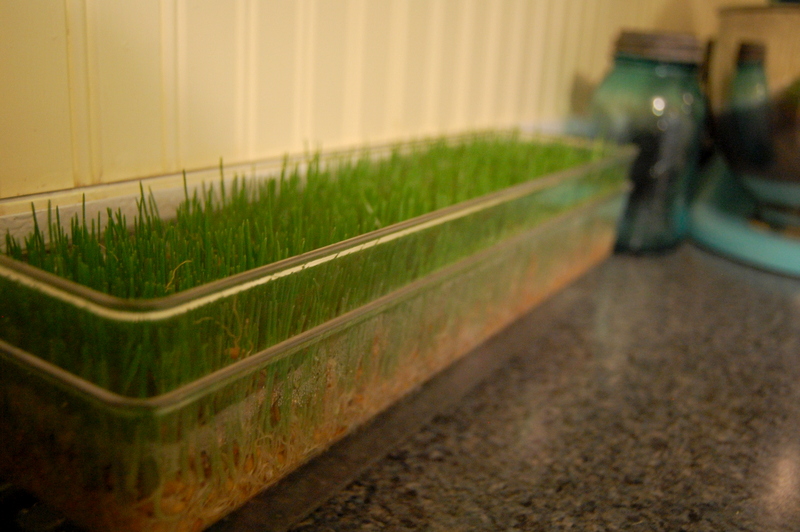
Wheat Grass
First let’s start with multi-purpose Wheat Grass. All your animals will love wheat grass. Anyone can easily grow wheat grass inside in a sunny window. I grow some inside and my cats like to nibble on it straight from the container. When you buy “pet grass” at the pet store it is usually wheat grass.
The chickens and rabbits gobble it up when I bring out large clumps of fresh greens (especially in winter when fresh greens are scarce). Wheat grass has lots of vitamins and a boost of calcium. High in vitamin E with antioxidants that may guard against heart disease and cancer and strengthens immune systems. B Vitamins maintain healthy skin and coats and can reduce the risk of pancreatic cancer. Click here to see how I grow wheat grass inside! It is very easy to grow and doesn’t even need soil, which is a bonus if your cats are nibbling it because you won’t get dirt everywhere when they knock it over.
Dogs
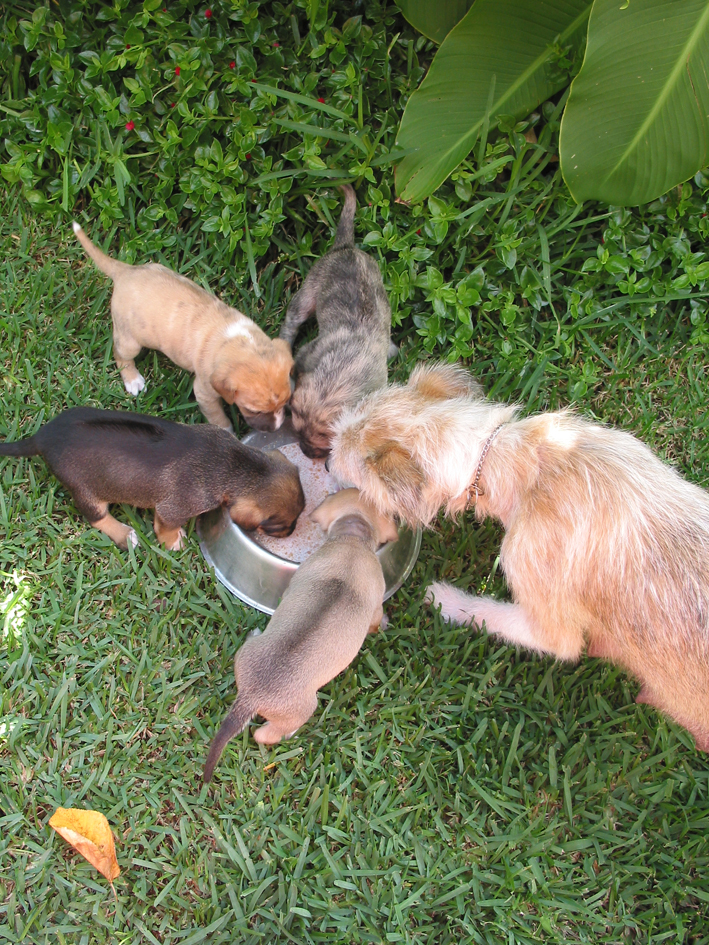
Dogs definitely love meat, but they are omnivores. Your dog’s diet should consist of approximately 25% vegetables.
Cantaloupe
Can help with your dog’s eyesight and is loaded with vitamin A and beta carotene, which helps reduce the risk of cancer. Best grown in warm climates, try growing this sprawling melon on a large trellis to save garden space.
Green Beans
Good for dogs because of their omega-3 fatty acids and vitamins A, C, and K. Climbing pole beans will yield a huge harvest and can even be grown in a container with a trellis, or along a fence. Your dog will like this veggie better when it’s been cooked.
Spinach
High in iron and can help your dog fend off inflammatory and cardiovascular issues, along with cancer. Spinach is very fast-growing and among the most cold-tolerant plants you can grow in your garden. Plant in early spring for a first harvest, then sow a second harvest towards the very end of summer for a fall harvest.
Pumpkin
Provides plenty of fiber, vitamin A, and antioxidants. Pumpkin vines can easily overtake a small garden, make sure you have room for them to spread. Try mixing pumpkin puree with some dry dog food.
Sweet Potatoes
A great source of vitamins E, A, B-6, and C, as well as calcium, iron, folate, potassium, copper, thiamine, and iron. Sweet potatoes can take up to 170 days to mature and are very sensitive to the cold, so growing these in cooler climates could prove challenging.
Blueberries
High levels of resveratrol with anti-cancer and heart disease-fighting qualities. Remember to net your bushes so the birds don’t take off with your whole harvest!
Watermelon
A safe source of lycopene for dogs (tomatoes are the best source of lycopene but aren’t good for dogs) as well as vitamins A, B-6 and C, as well as thiamin. Watermelon needs a long growing season and a warm climate, but there are smaller, baby varieties that I have had luck with even here in New England.
to read more about healthy veggies for your dog, check out this post from pet360
Cats
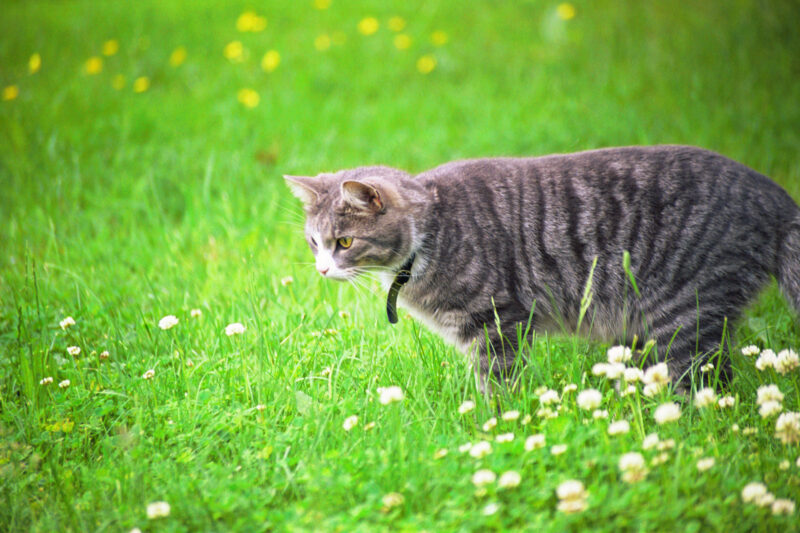
Unlike dogs, cats must consume meat to live and could potentially live on meat alone. Cats are obligate carnivores which means their main food source must be meat to survive, but they can also digest (and benefit from) vegetables, grains & fruits. What can you grow for your feline friends?
Catnip
This fragrant herb is a member of the mint family and is related to basil & oregano. The oil in leaves, stems & seeds famously makes cats go crazy! The high is completely harmless, can be very entertaining for humans to watch, and is a great way to get a lazy cat moving. Plant this outdoors with caution. Like most mint, it spreads and if you live in an area with a lot of stray cats you will be attracting cats from far & wide who will be digging in your garden and leaving behind not-so-nice “presents”. A large container on your deck or a sunny window inside is a great place to grow this herb.
Carrots
An excellent source of a lot of different vitamins and minerals, including healthy beta-carotene. Carrots need rich, loose soil free of rocks & roots. They are a great crop for cooler climates! Cook & dice carrots before serving to your kitty.
Peas
Can provide a healthy blend of proteins and carbohydrates. Peas don’t like hot weather, plant in early spring for the first harvest, then again in late summer for a fall harvest. Try making a mash of cooked peas to mix into your kitty’s regular food.
Broccoli
Gives a boost of antioxidants for a healthy immune system. Broccoli is another plant that likes the cooler weather, making it a good contender for both spring & fall harvesting. Try steaming broccoli florets and letting your cats nibble on the whole florets for a healthy treat.
Green Beans
A great source of fiber and super easy for even beginning gardeners to grow. Plant along a fence line in full sun and watch them take off! Cook them first to make it easier for your kitty to chew.
Rabbits

Many people think that rabbits are herbivores, but they are in fact omnivorous. Rabbits are the opposite of cats. Cats are obligate carnivores, and rabbits are classified as obligate herbivores. This means their main food source must be plant materials in order to survive, but they can also digest meat.
Typically a rabbit in the wild will only eat meat out of necessity, for instance, if they were starving or if they needed to eat a stillborn kit to hide the rest of the litter from predators. As a rabbit owner, it is hopefully unlikely these scenarios are in place so you want to focus on feeding high-quality veggies (and lots of them!) and plenty of fiber. Rabbits like (and need) a variety of veggies daily to meet their nutritional needs. Growing a garden for your rabbits is a great option and will save you a ton of money!
Herbs
Rabbits LOVE herbs both for their taste and for their nutritional benefits. Some to try to include basil, chamomile, cilantro, dill, mint, oregano, thyme, parsley, rosemary & sage. They will eat the leaves, but will also love the woody stems & the flowers if harvesting gets away from you and your herbs go to flower.
Dandelions & Clover
Weeds are bad right? Not for a rabbit! Dandelions are actually very nutritious and contain even more beta-carotene than carrots, more iron and calcium than spinach, and more potassium than bananas. Dandelions (both the flower and the leaves) and clovers are some of my rabbit’s absolute favorite treats. You can pick these straight from your lawn as long as you are not using any chemicals to treat your grass.
Calendula (Marigolds)
Another one of my bunny’s favorites, they love the flowers, the leaves, the stems – the whole plant. They are super easy to grow and the more you pick the flower heads off, the more they grow. Calendula is also great for deterring many garden pests like beetles, nematodes & cabbage moths. Make sure you choose Pot or English Marigolds (Calendula species) and not French or African Marigolds (Tagetes species). The French/African ones have a much stronger smell that can turn many rabbits off & could make them ill. Other garden flowers bunnies love include Nasturtiums, Sunflowers & Roses.
Lettuce & Spinach
Rabbits LOVE greens, the darker the healthier. Opt for romaine lettuce over iceberg or try a loose-leaf salad mix. Most salad greens prefer colder weather and will bolt in the hot summer heat making the lettuce bitter. While most humans won’t eat lettuce that has bolted, rabbits don’t seem to mind at all. Plant some loose-leaf lettuce in a mostly sunny spot and continually harvest it all season long for your buns.
Root Vegetable Tops
One of the great things about rabbits is they will eat the parts of the plants that we as humans don’t want. Plant root veggies like radishes, beets & carrots, your human family can enjoy the root veggie and your lagomorph family will love the tops. Of course, they would love it if you shared the root vegetables with them too! Rabbits seem to go hand in hand with carrots in the media but feed them very sparingly to your bunnies. They are very high in sugar and can mess with their digestive system.
Berry leaves
This is another great win-win gardening situation. Rabbits love berry leaves from strawberries, raspberries & blackberries. You get the tasty berries, bunnies get the tasty (to them) leaves. They also would love a treat of berries, but like carrots feed them sparingly because of the high sugar content.
Broccoli
Rabbits love all parts of the antioxidant-rich broccoli plant, from the tasty florets to the fiber-rich stalks to the dark leaves.
Chickens

Chickens are straight omnivores, which means they eat both plant material and meat. In the wild, chickens eat grains, seeds, fruit, vegetables & vegetation but also all kinds of insects, small rodents, or frogs. Pigs usually have a reputation around the farmyard for being a living garbage disposal, but chickens eat just as varied a diet just on a smaller scale. Chickens will love almost all fruits & veggies from the garden but the following will be a surefire hit. One of the few things in a typical garden to avoid with chickens is raw potato peels. Giving them leftover mashed or scalloped potatoes is fine though. Chickens can also benefit from a large variety of herbs – click here to read my top 6 picks for herbs to grow for your chickens!
Cabbage or Bussel Sprouts
These are great cold-weather plants your chickens will adore. You can feed them whole and watch the chickens roll them around the run, or you can hang them from a string like a little chicken birthday party pinata!
Tomatoes
I grow a lot of tomato plants every year. Not all the tomatoes make it to my table. Sometimes a bug got to them, sometimes a Blue Jay visited my garden sampling several tomatoes before taking off (GRRRR!). The chickens love tomatoes, especially big juicy ones plump with seeds. They will eat the less seedy paste tomatoes, but they are not their favorite. Note that while the tomato fruit is safe & healthy for chickens, they should not be fed the plant itself. Tomatoes (and potatoes, peppers & eggplant) are members of the nightshade family and their leaves can be toxic to eat.
Corn
Nothing makes me angrier than harvesting my corn only to find it infested with little bugs. Do you know who loves this? Chickens! Not only do they love picking the corn (raw or cooked) right off the cob, they think the bugs are a bonus side dish rather than an unsavory pest.
Strawberries
Strawberries seem to be the favorite among the berries. While they will eat raspberries & blackberries, they don’t seem to care much for blueberries. But toss in a couple of strawberries and you have a feeding frenzy. My girls usually get the berries that I find pre-nibbled from wild birds or animals.
Watermelon
Hands down this is my chicken’s favorite treat from the garden. A great treat on a hot summer day, they will quickly pick the flesh right down to the rind. Cantaloupe is another favorite melon with chickens.
Cucumbers & Pumpkins
Chickens love both of these vegetables and gobble them up seeds, flesh, guts & all leaving behind just a shriveled-up, picked clean skin. They don’t even mind if they are a little overripe. My flock loves a good, bloated overripe cucumber with big juicy seeds when I find a forgotten one hiding among the vines.
Sunflower Seeds
Not only do they love sunflower seeds, but they are great for growing shiny feathers. And who doesn’t love a happy sunflower patch in their garden?
Crab Grass
There is something about the broad-leaved crab grass that my girls just love. We don’t treat our lawn at all so we can let them roam and they love to gobble up juicy crab grass, along with lawn-destroying grubs. Then they leave behind a little free fertilizer – who needs a lawn company? Even when they aren’t out free ranging, if I come across a clump of crab grass, I pull it up and toss it in the run and they devour it.
Goats
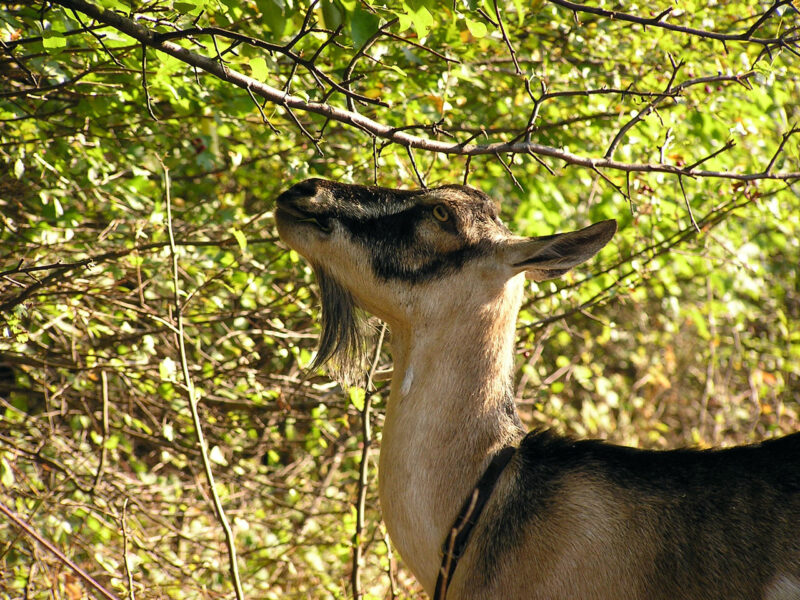
Goats are herbivores who spend most of the day browsing and eating a diet consisting exclusively of plant materials. They are ruminant animals which means they chew cud. It is often thought that goats will eat anything (including tin cans, cardboard, and clothing) but really they are just browsing. They nibble on a huge variety of thing daily to determine if it is suitable for eating. Goats will eat a large amount of hay and grass, but what can you grow in your garden for your goat?
Vetch
A family of legume flowering plants, they are fast growing and act as a great cover crop. Click here to read about using cover crops in your garden Not only will your goats like eating it, but it also provides them with a protein source, and vetch is awesome at fixing nitrogen levels in your soil. Talk about a win-win-win! Hairy vetch is probably the most commonly grown variety.
Bean & Pea Vines
You get to enjoy the tasty beans & peas and the goats get to enjoy chewing on the tasty vines!
Herbs
Goats love a huge variety of herbs, they can add a range of flavors to their diet along with nutritional benefits. Some to try include: oregano, sage, dill, mint, thistle, lavender and comfrey
Weeds
Just like herbs, weeds add a flavor variety to their diet. But unlike herbs, you don’t want the weeds around anyway! Some goat favorite weeds include dandelions, clover, lamb’s quarter & pigweed.
Root Vegetables
Goats will happily eat up not only the vegetables but the greens as well. Try beets, carrots, turnips & radishes
Bees
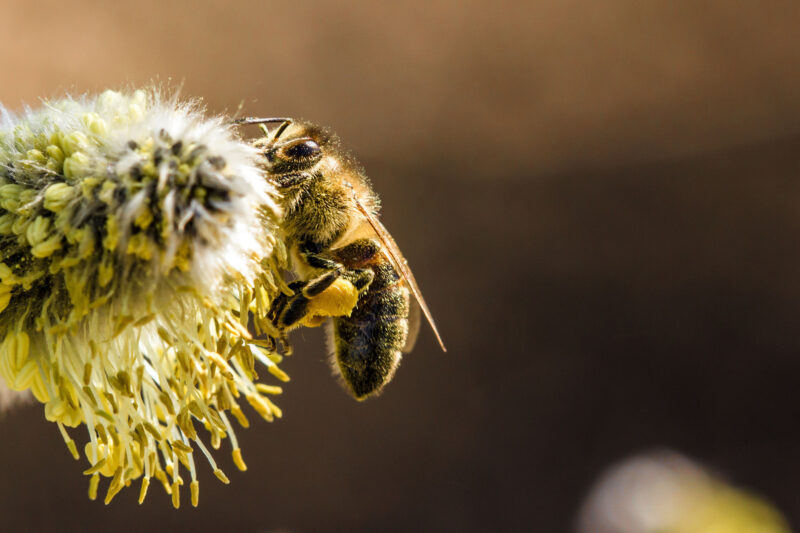
Let’s not forget our buzzing, pollinating friends! Even if you don’t get to reap the benefits of honey, we all need bees to survive. If honeybees were to go extinct we would be facing a world without fresh fruit, vegetables, nuts & seeds and that isn’t a world I want to live in! Planting a garden with flowering veggies is an awesome way to ensure not only farm-raised bees, but wild bees will be around for generations to come. Plants with flowers like beans, cucumber, peas, pumpkins, berries, melons, and summer & winter squash are all great for attracting bees.
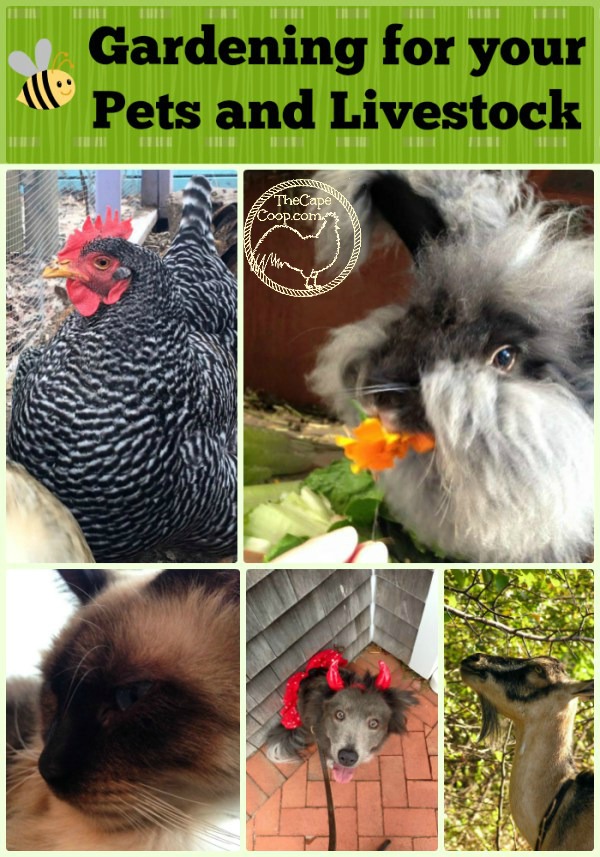
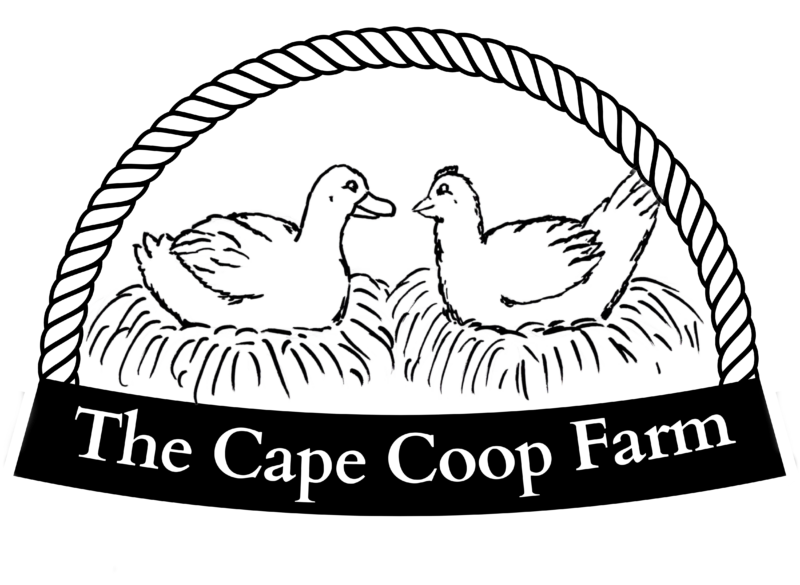


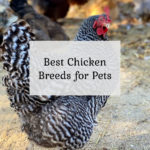

janet
Wednesday 9th of March 2016
There is so much excellent information in this post! Thanks for making such a great list for us to refer to.